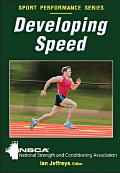 In 1996 Jon-Jon Park, the son of the great bodybuilding champion Reg Park, and I set off on a trip to Big Bear Lake, California. Our destination was the training camp of professional boxing champion Oscar De La Hoya. We were trying to convince Oscar and his trainer that we could provide a training and nutrition program for Oscar that would improve his already world-champion form.
In 1996 Jon-Jon Park, the son of the great bodybuilding champion Reg Park, and I set off on a trip to Big Bear Lake, California. Our destination was the training camp of professional boxing champion Oscar De La Hoya. We were trying to convince Oscar and his trainer that we could provide a training and nutrition program for Oscar that would improve his already world-champion form.
It wasn’t an easy sell by any means. Oscar and his coach felt that Oscar’s forte was his lightening-fast punching speed and his ability to move nimbly around the ring during a bout. When we suggested that he consider a sport-specific weight-training program, he had a quizzical look on his face. His coach then proceeded to tell us that Oscar “was not trying to be a bodybuilder, and he can’t afford to lose any speed.”
When I asked Oscar if he had ever engaged in any weight training, he replied, “Well, I run with leg weights on.” Other than that, he had avoided actual direct weight training after being advised at the start of his career that lifting weights would only make him “muscle-bound” and slow.
It took about three hours, but we were able to convince Oscar to give weight training a try by telling him that it would be strictly a sport-specific program designed to enhance his performance in the ring only.
Within three months of training, Oscar felt his hand speed had improved about 20 percent—and the guy was already fast when we met him. Now convinced of the value of weight training, Oscar never looked back and trained enthusiastically for the time we worked with him. But when we stopped training him, he went back to the ancient boxing training rituals, including chopping wood in the forest. He also stopped lifting weights. Perhaps it’s just a coincidence, but in his first fight after not working with us, he lost.
Oscar’s initial attitude toward weight training was widespread when I first began working out. In those days coaches often advised their athletes to keep away from weights because they would slow you down. That was especially true in speed-dominant sports, such as track. The coaches’ rational was that lifting weights produced larger muscles, and large muscles equated with lack of speed. Interestingly, the coaches had it backward. Speed depends on the type 2A and 2X muscle fibers, also known as “fast twitch.” In contrast, type 1, or “slow-twitch,” muscle fibers are more linked to muscle endurance. Lifting weights, by focusing on the type 2 fibers, make you faster, not slower.
There aren’t many books available that specifically discuss how to develop increased speed. Until the nature of muscle fibers became known, speed was thought to be entirely genetic. While certain aspects of speed, such as body structure, are genetic, the truth is that it can be developed, just as muscle can be built with weights. In Developing Speed, published by Human Kinetics in cooperation with the National Strength and Conditioning Association, eight eminent speed experts provide drills and exercises designed to boost speed. All aspects of speed development are discussed in the book, and the final chapter outlines sport-specific speed programs for baseball, basketball, football, ice hockey, rugby, soccer, tennis and track. The information is accompanied by numerous illustrations, and is written in a nontechnical style.
Developing Speed is an essential text for anyone interested in achieving peak speed for any sport. It’s especially useful for trainers, coaches and, of course, athletes. It’s available from Human Kinetics Publishers, Inc.,
www.HumanKinetics.com.
—Jerry Brainum




















You must be logged in to post a comment Login